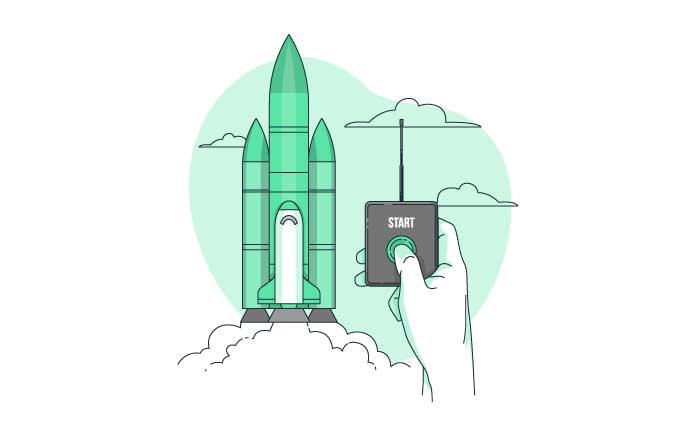Why a Single Rocket Test Was a Giant Leap for the Artemis II Crew
When Neil Armstrong uttered the now-famous phrase, “That’s one small step for man, one giant leap for mankind,” he had just taken humanity’s first steps on the moon. More than half a century later, the National Aeronautics and Space Administration (NASA) is preparing the Artemis II mission crew to return.
This mission is part of a years-long moon exploration program. The long-term goals are to establish a permanent moon base and facilitate crewed missions to Mars. The team recently made considerable progress with a single rocket test, propelling the mission forward. While more Artemis II launch preparations are ahead, the timeline is promising.
The Artemis II Engineering Test
NASA’s Kennedy Space Center team completed the RS-25 rocket engine checkout test on June 30, 2025, as part of the Space Launch System (SLS) program-specific engineering test (PSET). Its assessment ensures the four engines work as designed.
The RS-25 engine has a storied history in spaceflight, with numerous missions spanning decades. Johnny Heflin — the manager at NASA’s Marshall Space Flight Center’s SLS Liquid Engines Office — says it is among the most reliable high-performance engines ever built and “was way ahead of its time.”
Even so, manufacturing techniques have advanced over time, necessitating engineering improvements. Aerojet Rocketdyne — a subsidiary of L3Harris — recently redesigned the engine nozzle jacket, using four large metal cones instead of 37 separate pieces. Heflin says this one change reduces manufacturing costs by 20% and accelerates turnaround times.
Three of the SLS engines are upgraded space shuttle main engines that have flown before, while one will make its inaugural flight on the Artemis II mission. Collectively, they have supported dozens of missions.
Ensuring they are in working order — especially after Aerojet Rocketdyne’s redesigns — is a critical milestone in the SLS PSET series, bringing the team substantially closer to the launch of the first crewed mission to the moon in over 50 years.
Lessons Learned From This Test
This engine test helps establish NASA’s space exploration capabilities, demonstrating the importance of building on foundational knowledge to achieve effective, innovative solutions. It directly impacts the crew’s journey to become the first humans to travel to deep space since the Apollo era.
The Artemis II crew will travel approximately 4,600 miles over 10 days to conduct the lunar flyby and return to Earth. The main objective is to confirm that the spacecraft’s life support, communication and navigation systems operate as intended in deep space.
While the team has made an enormous leap forward in developing the technology for a long-term lunar presence, more tests remain. Now that it has assessed the core stage, rocket boosters and upper stage, extensive Artemis II launch preparations remain.
What Does NASA Have Left to Do?
Before NASA rolls the fully connected vehicle to the launch pad, it must conduct a series of PSETs to verify end-to-end functionality and interoperability. This covers end-to-end communications testing, a countdown demonstration and flight termination system testing.
While some tests take place in the vehicle assembly building, others occur after the SLS and Orion are moved to the pad. Since experts estimate the Artemis launches will cost at least $4.1 billion each. Painstaking attention to detail is vital. NASA will make any necessary final adjustments ahead of launch, regardless of how it delays the planned 2026 start date.
With Artemis I, liquid hydrogen and gaseous nitrogen issues necessitated four wet dress rehearsals. The final one occurred on June 20, 2022. During fueling, the team detected a hydrogen leak, halting the countdown at T-29 seconds instead of T-9 seconds as initially planned. However, despite the setback, the fourth was ultimately a success.
If the Artemis II launch preparations are successful, the crew members could take off by spring 2026. While they won’t step foot on the moon like Neil Armstrong, their mission is equally important because it sets the stage for humans to explore humanity’s final frontier — deep space.
Ushering in a New Era of Exploration
From an evolutionary standpoint, humans were never meant to fly. Fortunately, they didn’t let that stop them. Just over a century ago, humanity invented flight. Even though the Artemis II mission literally involves rocket science, it is unfolding swiftly, ushering in a new era of exploration.
One day, people will view the Artemis program like the Apollo mission and the Wright brothers. It will become a stepping stone on the path to building life on Mars or reaching distant planets. If nothing else, it demonstrates the value of diligence and innovation.

Emily Newton has nine years of creating manufacturing articles under her belt. She loves helping people stay informed. Her work in Machine Design, American Machinist and Design and Development Today, showcases her ability to identify newsworthy stories. When Emily isn’t writing, she enjoys building lego sets with her husband.



